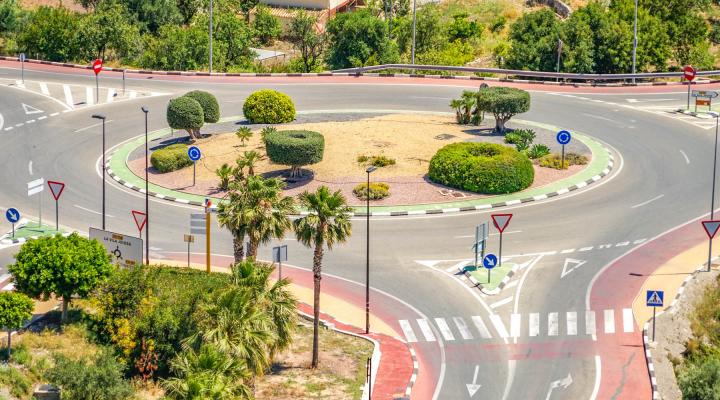
When you’re a newly qualified driver, driving around a roundabout can leave you feeling slightly nervous. Those nerves quickly return to the surface when it comes to driving around a roundabout in a new country: they can be difficult to understand, and the rules aren’t always immediately obvious. Unfortunately, there are approximately 38,000 roundabouts in Spain so, if you’re driving in the country, it’s likely that you’ll have to navigate one!
When it comes to roundabouts, only France and Portugal have more per capita in Europe. Spanish road planners are clearly big fans of adding roundabouts to Spanish roads! But do you know how to drive around a Spanish roundabout safely? And how do the rules for Spanish roundabouts differ from the rules for their UK counterparts? Here’s everything you need to know about driving on roundabouts in Spain:
Why Is It Important to Follow Roundabout Rules?
In the past five years the number of fatal car accidents that have taken place on a roundabout in Spain has doubled. In urban areas there has been an 86% increase in the number of accidents. In an attempt to counterbalance this figure, you can now face a fine of up to 200 euros for using a roundabout incorrectly, so it’s important to understand the rules.
Common roundabout related traffic violations that you can be fined for include exiting dangerous, cutting across lanes that are being utilised by other drivers, and not indicating properly. According to Foremaster (a logistical analysis company), 60% of Spanish drivers don’t indicate correctly at roundabouts, so this is a huge issue for Spanish drivers (and a potentially lucrative one for Spanish authorities).
So, What Are the Rules?
The good news is that if you know how to drive around a roundabout in your home country, you should find it easy to drive around a roundabout in Spain. The main things you should understand are:
- You should always give way to any drivers already driving on the roundabout, only entering the roundabout when it’s clear.
- Drive around the roundabout in an anticlockwise direction.
- When entering a roundabout, the lane you choose should correspond with the exit you are going to take. You don’t need to use your indicators when entering a ‘rotonda’ as the lane choose will make your direction clear to other road users
- Stick to the outside lane if you are taking the first or second exit. If you are taking the second exit you can indicate to the right as you approach it (you don’t need to do this if you are taking the first exit as this may confuse other drivers).
- If you’re taking the third exit then the middle or inside lanes should be the correct choice for you, and then you can move over to the outside lane when you have passed the second exit. Check your blind spot before you change lanes to ensure that, if other drivers aren’t following the rules correctly, you don’t get in their way. Indicate your intention to turn only when you are getting close to the exit.
- If you are taking the fourth or any subsequent exits, then use the inside lane once you have entered the roundabout. Again, you should only move out to the outside lane as you approach your exit, and indicate just before you are ready to turn.
- If there is a cyclist or a group of cyclists on the roundabout, then they should always be given priority and you should give way to their needs
- When you exit a roundabout, you should do so from the outside lane. The only exception to this rule is if there is a road sign explicitly indicating that you should do otherwise.
- Although this isn’t commonly done, technically the roundabouts inside lane can also be used to overtake. If you choose to do this, then you should use your indicator to make other motorists aware of what you’re doing.
- On many city roundabouts you will find pedestrian zebra crossings just after the exits, which could mean you have to stop as soon as you exit the roundabout. Be aware of this and look out for traffic lights, pedestrians, and other traffic as you turn.
Following the Rules Isn’t Universal
Now that you know the Spanish rules for roundabout use, you also need to be aware that not everyone on the road will follow them! When you are driving around a roundabout you should remain as alert as possible, because Spanish drivers won’t always give way to other road users, even if you are already on the roundabout. What’s more, tailgating can be a real problem amongst Spanish motorists, so don’t break suddenly or make any unexpected changes when driving on Spanish roundabout as this could dramatically increase your likelihood of being hit from the rear, or causing another kind of collision.
Are you thinking of moving to Spain? Whether you want to travel from spot to spot and enjoy everything is culturally diverse location has to offer, or you’re just looking for somewhere quiet and warm to enjoy your retirement, our locally based property experts can help. Why not get in touch today to find out more about how we can help you find the home of your dreams.

 English
English Español
Español Deutsch
Deutsch Français
Français Svenska
Svenska Nederlands
Nederlands Italiano
Italiano Norsk
Norsk Русский
Русский



































